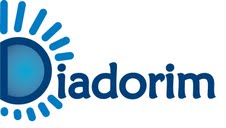A AQUISIÇÃO DE ASPECTO GRAMATICAL NO INGLÊS COMO L2: Uma Investigação do Morfema -ed
THE ACQUISITION OF GRAMMATICAL ASPECTS IN ENGLISH AS L2: An Investigation of the Morpheme –ed
Palavras-chave:
Aquisição de segunda língua, Aspecto, Perfectivo, Imperfectivo, Second language acquisition, Aspect, Perfective, ImperfectiveResumo
O aspecto gramatical relaciona-se ao tempo interno de uma situação e refere-se às formas distintas de contemplar a constituição temporal no interior de uma situação. Existem pelo menos dois tipos de aspectos gramaticais: perfectivo e imperfectivo. Em português, os aspectos perfectivo e imperfectivo realizam-se através de morfemas distintos, enquanto no inglês se utiliza o morfema -ed na veiculação de ambos os aspectos. O objetivo deste estudo é contribuir para o entendimento da aquisição das categorias aspectuais em inglês como L2. Mais especificamente, pretende-se investigar a aquisição do morfema -ed do inglês por falantes de português brasileiro. Para tanto, foi desenvolvido um teste de preenchimento de lacunas para avaliar se falantes nativos de português brasileiro, aprendizes de inglês como segunda língua e subdivididos entre os níveis básico 1, intermediário 2 e avançado, associam os dois aspectos gramaticais básicos, perfectivo e imperfectivo, ao morfema -ed. A análise dos resultados revela que os aprendizes de inglês associam mais facilmente o morfema -ed ao perfectivo do que ao imperfectivo, uma vez que, além da utilização do morfema -ed, os informantes de nível avançado também utilizaram a perífrase formada por “used to” + infinitivo. Esses aprendizes parecem oscilar na utilização dessas duas formas. Uma interpretação possível é que os alunos buscam estabelecer uma relação unívoca entre forma verbal e aspecto gramatical subjacente, existente no português, nas suas produções linguísticas em inglês.
Abstract
The grammatical aspect is related to the internal time of a situation and refers to the different ways of contemplating the temporal constitution within a situation. There are at least two types of grammatical aspects: perfective and imperfective. In Portuguese, the perfective and imperfective aspects are realized through distinctive morphemes while in English the morpheme -ed is used in the placement of both aspects. The aim of this study is to contribute to the understanding of the acquisition of aspectual categories in English as a second language. More specifically, we intend to investigate the acquisition of the morpheme -ed in English by Brazilian Portuguese speakers. For this purpose, a gap-filling test was developed to assess whether native Brazilian Portuguese speakers, who are English learners as a second language and subdivided between basic 1, intermediate 2 and advanced levels, associate the two basic grammatical aspects, perfective and imperfective, to the morpheme -ed. The analysis of the results reveals that English learners associate the morpheme -ed more easily with the perfective than with the imperfective, since, apart from the use of the morpheme -ed, the advanced informants also utilize the periphrasis formed by “used to” + infinitive. Apprentices seem to fluctuate in the use of these two forms. A possible interpretation is that students seek to establish a univocal relationship between verbal form and underlying grammatical aspect, existing in Portuguese, in their English language productions.
Downloads
Downloads
Publicado
Como Citar
Edição
Seção
Licença
Copyright (c) 2021 Episteme Transversalis

Este trabalho está licenciado sob uma licença Creative Commons Attribution-NonCommercial 4.0 International License.
Revista Episteme Transversalis © 2010 por Centro Universitário Geraldo Di Biase está licenciada sob Creative Commons Atribuição 4.0 Internacional. Para visualizar uma cópia desta licença, visite https://creativecommons.org/licenses/by/4.0/













